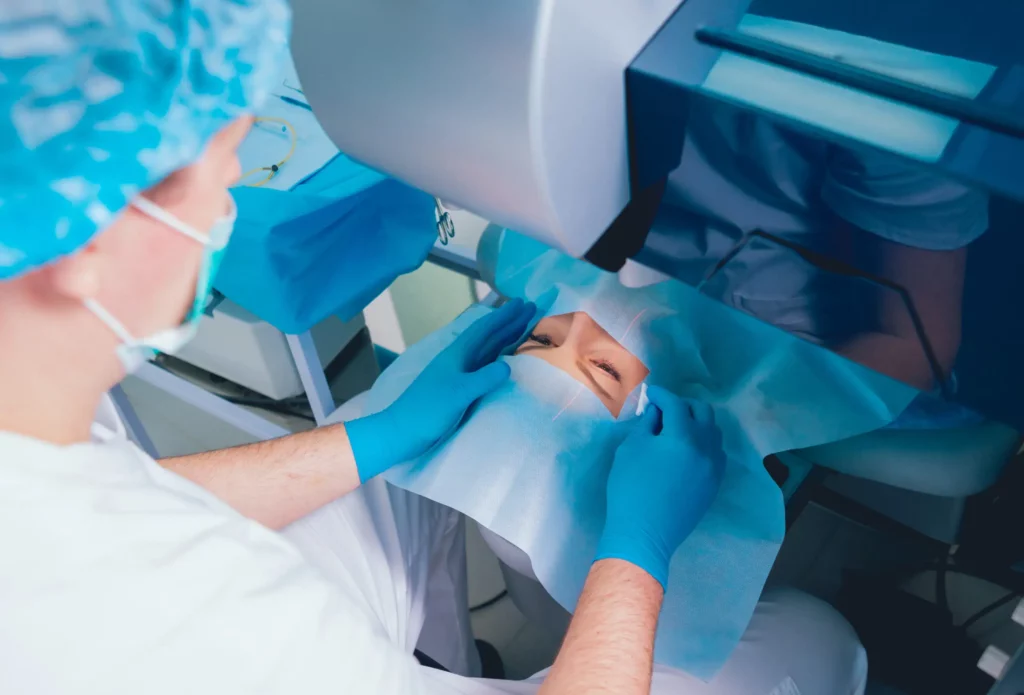Are you tired of wearing glasses or contact lenses and curious about corrective eye surgery? Well, you’re not alone! Many people are exploring the possibility of improving their vision through various surgical procedures. In this comprehensive guide, we’ll dive into the world of corrective eye surgery, discussing the different types available, their benefits, and what to expect throughout the process. Intrigued? Keep reading to find out how these life-changing procedures can help you see the world more clearly than ever before.
Contents
6 Types of Corrective Eye Surgery
Now that we’ve piqued your interest, let’s delve deeper into the various types of corrective eye surgery available. Each procedure has its unique advantages, and understanding their differences will help you make an informed decision about which option is right for you. So, without further ado, let’s explore the fascinating world of vision correction.
LASIK (Laser-Assisted In Situ Keratomileusis)
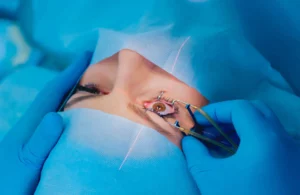
With LASIK (Laser-Assisted In Situ Keratomileusis), you can look forward to improved vision in a fast, efficient procedure.
During LASIK, an experienced surgeon uses an advanced laser to create a thin flap in the cornea, which is the transparent layer covering the front of your eye. Once the flap is created, they’ll gently lift it to access the underlying corneal tissue. Next, a highly precise laser is used to reshape the cornea, correcting your vision by adjusting the way light enters your eye.
The entire LASIK procedure is quite speedy, taking only about 10-15 minutes per eye. After the cornea has been reshaped, the surgeon carefully repositions the flap, allowing it to adhere naturally without the need for stitches. This advanced technique leads to rapid visual recovery and minimal discomfort.
With LASIK, you can expect to notice significant improvements in your vision within just 24 to 48 hours. Most people experience little to no pain during the procedure, and post-operative care typically involves using antibiotic and anti-inflammatory eye drops to prevent infection and inflammation.
So, if you’re looking for a fast, effective way to improve your vision, LASIK could be the perfect solution for you!
PRK (Photorefractive Keratectomy)
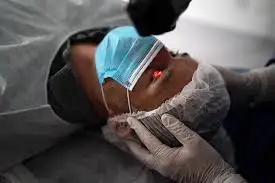
Let’s talk about PRK (Photorefractive Keratectomy), another popular corrective eye surgery that has been helping people see better for decades.
PRK is a laser procedure that reshapes the cornea to correct common vision problems like nearsightedness, farsightedness, and astigmatism. It’s similar to LASIK in many ways, but instead of creating a corneal flap, the surgeon gently removes the outer layer of the cornea, called the epithelium.
One of the advantages of PRK over LASIK is that it’s suitable for people with thinner corneas or those who may not be ideal candidates for LASIK due to certain lifestyle factors, such as contact sports or occupations that put the eyes at a higher risk of injury.
The recovery time for PRK is generally longer than that of LASIK. It may take a few days to a week for the epithelium to regrow, and during this time, you may experience some mild discomfort, light sensitivity, and blurry vision. However, your doctor will provide you with medicated eye drops to help manage any discomfort and promote healing.
LASEK (Laser-Assisted Subepithelial Keratomileusis)
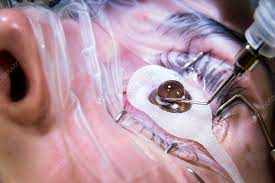
Let’s talk about LASEK, another fantastic option for vision correction. Like PRK, LASEK lifts the epithelium, but it is preserved during the surgery. The cornea is reshaped using an excimer laser, and the epithelium is repositioned afterward.
While LASEK offers a faster recovery than PRK, it may involve slightly more discomfort and a longer healing period compared to LASIK. LASEK is a great alternative for individuals who may not be suitable candidates for LASIK, providing effective vision correction with a less invasive approach.
SMILE (Small Incision Lenticule Extraction)
Looking for a minimally invasive option? SMILE could be the answer!
SMILE (Small Incision Lenticule Extraction) is a minimally invasive vision correction procedure that’s perfect for those seeking an alternative to LASIK and PRK. During SMILE, a small incision is made in the cornea, allowing the surgeon to remove a thin disc of tissue, known as a lenticule. This reshapes the cornea and corrects vision issues like moderate to high levels of myopia (nearsightedness) and astigmatism.
One of the advantages of SMILE is its faster healing times, as the procedure leaves the majority of the cornea intact. This leads to fewer complications and a reduced risk of dry eye syndrome. If you’re looking for a cutting-edge, minimally invasive option for vision correction, SMILE could be the right choice for you.
Refractive Lens Exchange (RLE)

Refractive Lens Exchange (RLE), or clear lens extraction, is an innovative surgical procedure designed to address presbyopia and extreme farsightedness. RLE corrects refractive errors by replacing the eye’s natural lens with a high-quality artificial intraocular lens (IOL).
This procedure is particularly beneficial for individuals who may not be suitable candidates for other vision correction surgeries like LASIK, PRK, or SMILE. RLE offers the advantage of addressing both refractive errors and the potential development of cataracts in the future, as the artificial lens is not susceptible to cataract formation. With RLE, patients can enjoy long-lasting, clear vision, reduced dependence on glasses or contact lenses, and an improved quality of life.
Phakic Intraocular Lens Implants (IOLs)
Last but not least, let’s discuss phakic IOLs. These surgically implanted lenses work alongside your eye’s natural lens to correct vision. They’re perfect for individuals with high levels of myopia or hyperopia (farsightedness) who may not be suitable candidates for LASIK or PRK. There are two main types of phakic IOLs: anterior chamber IOLs and posterior chamber IOLs.
Choosing The Right Type Of Corrective Eye Surgery For You
Now that you’re familiar with the various corrective eye surgeries, you might be wondering which one is right for you. Don’t worry, we’ve got your back! Here are some factors to consider when choosing the best procedure for your unique situation:

- Type and severity of your refractive error
- Corneal thickness and shape
- Pupil size
- Age and overall eye health
- Occupation and lifestyle
How Much Does Corrective Eye Surgery Cost?
The cost of corrective eye surgery in India varies depending on the type of procedure, the location of the clinic, and the surgeon’s experience.
- LASIK: The cost of LASIK surgery in India typically ranges from ₹20,000 to ₹1,60,000 per eye. Factors such as the technology used, the surgeon’s expertise, and the clinic’s location can influence the cost.
- PRK: PRK surgery in India generally costs between ₹25,000 and ₹75,000 per eye. Similar to LASIK, the price can vary based on the technology, surgeon, and location.
- LASEK: LASEK surgery in India can range from ₹30,000 to ₹85,000 per eye, depending on various factors, including the specific technique used and the surgeon’s experience.
- SMILE: SMILE surgery in India is relatively new and typically costs between ₹75,000 and ₹1,20,000 per eye. The cost of SMILE may be higher due to the advanced technology and equipment involved.
- Refractive Lens Exchange (RLE): RLE surgery in India can be more expensive, ranging from ₹90,000 to ₹2,00,000 per eye, depending on the type of intraocular lens (IOL) used and the complexity of the procedure.
- Phakic Intraocular Lens Implants (IOLs): The cost of phakic IOLs in India varies depending on the type of lens used (anterior or posterior chamber IOL) and the specific brand. Typically, the cost ranges from ₹85,000 to ₹1,50,000 per eye.
The Benefits You Can Expect
Curious about the benefits of corrective eye surgery? Here’s what you can look forward to:
- Improved vision and reduced reliance on glasses or contact lenses
- Boosted self-confidence and quality of life
- Greater freedom to participate in sports and other activities
- Long-lasting results with minimal maintenance
Sounds amazing, doesn’t it? Just imagine the freedom and convenience of living life without the constant need for glasses or contacts!
Risks and Potential Complications to Consider
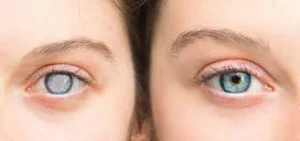 Although corrective eye surgery has a high success rate, it’s important to be aware of potential risks and complications, which may include:
Although corrective eye surgery has a high success rate, it’s important to be aware of potential risks and complications, which may include:
- Infection
- Dry eyes
- Glare or halos
- Undercorrection or overcorrection
- Regression of vision improvement
- Corneal haze or scarring
To minimize these risks, have an open discussion with your surgeon and follow all pre- and post-operative care instructions carefully.
Conclusion
Corrective eye surgery can be a life-changing decision that leads to improved vision, greater freedom, and an enhanced quality of life. By understanding the various types of corrective eye surgery available, their benefits, and potential risks, you can make an informed decision about which option is best for you.
Ready to transform your vision and experience the world like never before? At LasikDelhi.in, we’re dedicated to providing exceptional eye care for people of all ages. Our expert team offers a wide range of cutting-edge procedures, including PRK, Femto Lasik, SMILE surgery, Standard Lasik, ICL and Contoura vision. Discover the difference that personalized, high-quality eye care can make in your life. If you have any questions on Lasik surgery in Delhi, Lasik surgery cost and Lasik procedure, call us at 9711116605 or email at [email protected].
